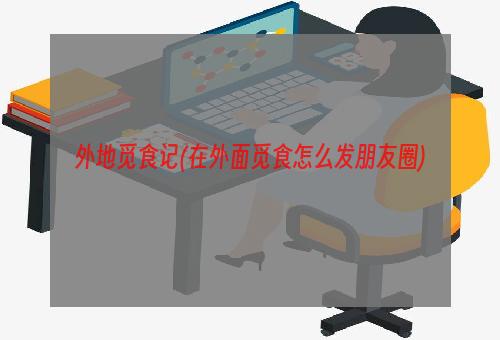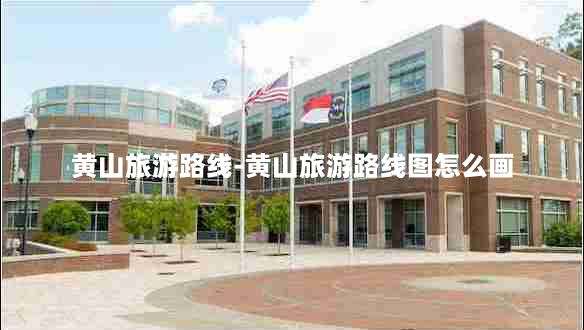数字图书馆(什么是数字图书馆)
你怎么理解“数字图书馆”?
现在的图书馆已经有了许多变化。新型信息文献载体已悄然进入图书馆,从早期的录音带、录像带、缩微胶片到当前流行的电子图书、电子期刊,全文数据库、激光唱盘、激光视盘、教学软件、电子游戏软件等等,人们获取信息的途径已不限于印刷类型的图书文献。以前读书借书前要翻阅目录柜里成千上万张卡片,现在,计算机读目录数据库取代了体积庞大的目录柜。读者不但能够从多种途径检索馆藏图书,而且还能够检索到其他图书馆的馆藏图书。

国际互联网的建立和完善,让“数字图书馆”的成功离现实也不远了。这样使全球范围内人类共享资源的这一梦想成为现实。“数字图书馆”是美国国会图书馆于1994年10月首先提出来的。“数字图书馆”就是将所有图像、声音、文字等资料经过计算机处理转变成数字化的形式进行展示,并通过 *** 技术进行存储和传播。
未来的图书馆将不存在印刷文献,图书馆现有的馆藏资料也可以转化为数字形式,例如可以通过扫描技术将文字资料转换为计算机文本,对那些需要保持原貌的文献,可用数字化图像技术转换和存储,未来图书馆文献的主体将是光盘文献、 *** 文献,与印刷文献相比,它们只占据很小的空间,甚至不占据空间。
如果数字化图书馆得到实现,数十本甚至上百本图书可以存放在一张光盘上,图书馆所需的书库面积将非常小,书架、书柜、目录柜将被计算机所取代。现在各图书馆将某些珍贵的美术图书、艺术图书小心保存起来,读者很难接触到它们,一些孤本一旦丢失或人为损坏,这样损失是难以弥补的。而经过数字化处理后,那些逼真的艺术作品电子复制品可以在计算机上反复调阅,原件不会被损坏,也不必担心被盗的问题。现在图书馆的某些图书如果被读者借走,则其他读者在一段时间内就不能利用它。经过数字化处理后,一种图书可以同时被几位读者同时调阅。数字化的图书大多数是以多媒体技术制成的,图、文、声并茂,有的还具有交互功能,读者不是被动地接受信息,而是可以与多媒体图书进行对话,甚至可以参与到图书的创作中去,那时的图书馆将更像博物馆。
现在读者的活动范围往往局限在一个或少数几个图书馆中,未来则可以利用全球图书馆的上网信息和文献。读者可以访问网上所有开放的图书馆,他们将就所学习的某个专题收集到尽可能多的资料。
什么是数字图书馆
图书馆,是搜集、整理、收藏图书资料以供人阅览、参考的机构,早在公元前3000年就出现了图书馆,图书馆有保存人类文化遗产、开发信息资源、参与社会教育等职能。
近年来随着我国数字出版产业持续高速增长,2017年我国数字出版产业整体收入超过5000亿元。在数字图书馆建设全面推进下,公众在信息获取、数字阅读等方面的文化诉求得到较大满足。
全国数字图书馆实名用户超过800万人。随着互联网技术不断发展,尤其是“互联网+”概念的提出,使得图书馆数字化逐渐成为图书馆发展的重要趋势。
数字图书馆是将文字、图像、声音等数字化信息,通过互联网传输,从而做到信息资源共享。每个拥有任何电脑终端的用户只要通过联网,登录相关数字图书馆的网站,都可以在任何时间、任何地点方便快捷地浏览的数字化信息资源。
与传统图书馆对比,数字图书馆有如下优势:
1. 用户之间互动性增强
由于数字图书馆以 *** 和高性能计算机为环境,向读者和用户提供比传统图书馆更为广泛、更为方便。具有与传统图书馆不同的功能和特征,在馆藏建设、读者服务等方面都有了新的发展。比如在阅读的过程中,逼近可以分享记录自己的阅读心得,还可以结交一系列跟自己有共同爱好的书友,分享彼此的阅读体验。
2.知识的展现形式更丰富
从文献存储上看,传统图书馆的馆藏载体主要是纸质文献,与之相比数字图书馆不仅只包含文字图书,还包含音频图书,动画视频类的图书,让孩子的学习方式更加的丰富生动,学习的效果也更灵活高效,知识的展现形式也显得更加丰富。
3.图书检索效率更高
在以往常规的图书馆,看书之前的检索问题也是让很多读者非常的苦恼。虽然系统当中会显示出书籍所在的位置,但是当读者好不容易走到书本所在位置的时候,往往却很难找到对应的资源。然而数字图书馆不受物理空间的限制,它们所能收藏的阅读资料也没有空间限制,资源搜索效率也就更高效。
4.信息传递更便捷
从信息的传递速度上看,传统图书馆位置固定,读者往往将大量的时间花费在去图书馆的路上。数字图书馆则可以利用互联网迅速传递信息,读者只要登录网站,轻点鼠标,即使和图书馆所在地相隔千山万水,也可以在几秒种内看到自己想要查阅的信息。
5.资源利用率更高
从资源共享角度上看,一本" 书"通过服务器可以同时借给多个人查阅,大大提高了信息的使用效率。况且电子阅读馆没有纸质化图书资源,可以减少纸质的使用率,从而让阅读变得更加的环保。
什么是数字图书馆?
英文资料:
"The new digital libraries will have features not possible in traditional libraries, thereby extending the concept of library far beyond physical boundaries. They will provide innovative resources and services. One example is the ability to interact with information: rather than presenting a reader with a table of numbers, digital libraries allow users to choose from a variety of ways to view and work with the numbers, including graphical representations that they can explore. With the extensive use of hypertext links to interconnect information, digital libraries enable users to find related digital materials on a particular topic."
(2001 PITAC Report, "Digital Libraries: Universal Access to Human Knowledge", p. 3)
"Digital libraries are organizations that provide the resources, including the specialized staff, to select, structure, offer intellectual access to, interpret, distribute, preserve the integrity of, and ensure the persistence over time of collections of digital works so that they are readily and economically available for use a by a defined community or set of communities."
(Digital Library Federation)
"Digital libraries are complex data/information/knowlege (hereafter information) systems that help: satisfy the information needs of users (societies), provide information services (scenarios), organize information in usable ways (structures), manage the location of information (spaces), and communicate information with users and their agents (streams)."
(Edward A. Fox, July 1999, according to 5S Framework)
"Digital library work occurs in the context of a complex design space shaped by four dimensions: community, technology, services and content"
(Gary Marchionini and Edward A. Fox, "Progress toward digital libraries: augmentation through integration", pp. 219-225, guest editors' introction to "Progress Toward Digital Libraries", eds. Gary Marchionini and Edward A. Fox, Special Issue, Information Processing & Management, 35(3), May 1999.)
"The field of digital libraries deals with augmenting human civilization through the application of digital technology to the information problems addressed by institutions such as libraries, archives, museums, schools, publishers and other information agencies. Work on digital libraries focuses on integrating services and better serving human needs, through holistic treatment irrespective of interface, location, time, language and system. Although substantial collections may be created solely for the use of indivials, we consider sharable resources one of the defining characteristics of libraries. Libraries connect people and information; digital libraries amplify and augment these connections."
(Gary Marchionini and Edward A. Fox, "Progress toward digital libraries: augmentation through integration", Information Processing & Management, 35(3):219-225, May 1999.)
For a thoughtful discussion of definitions, approaches, and community perspectives on "digital libraries" see "What are digital libraries? Competing visions" by Christine L. Borgman, pp. 227-244, in "Progress Toward Digital Libraries", eds. Gary Marchionini and Edward A. Fox, Special Issue, Information Processing & Management, 35(3), May 1999.
"The Digital Library is:
The collection of services
And the collection of information objects
That support users in dealing with information objects
And the organization and presentation of those objects
Available directly or indirectly
Via electronic/digital means."
(The Scope of the Digital Library, Draft Prepared by Barry M. Leiner for the DLib Working Group on Digital Library Metrics, 1998)
"Digital library is a concept that has different meanings in different communities. To the engineering and computer science community, digital library is a metaphor for the new kinds of distributed data base services that manage unstructured multimedia data. To the political and business communities, the term represents a new marketplace for the world's information resources and services. To futurist communities, digital libraries represent the manifestation of Wells' World Brain. The perspective taken here is rooted in an information science tradition."
(Research and Development in Digital Libraries by Gary Marchionini, 1998)
"an organized data base of digital information objects in varying formats maintained to provide unmediated ease of access to a user community, with these further characteristics:
- an overall access tool (e.g. a catalog) provides search and retrieval capability over the entire data base;
- organized technical proceres exist through which the library management adds objects to the data base and removes them according to a coherent and accessible collections policy."
(Peter Graham, Rutgers University Libraries, 1997)
"Digital libraries are a set of electronic resources and associated technical capabilities for creating, searching, and using information. In this sense they are an extension and enhancement of information storage and retrieval systems that manipulate digital data in any medium (text, images, sounds; static or dynamic images) and exist in distributed networks. The content of digital libraries includes data, metadata that describe various aspects of the data (e.g., representation, creator, owner, reproction rights), and metadata that consist of links or relationships to other data or metadata, whether internal or external to the digital library.
(1996 UCLA-NSF Social Aspects of Digital Libraries Workshop)
Digital libraries are constructed -- collected and organized -- by a community of users, and their functional capabilities support the information needs and uses of that community. They are a component of communities in which indivials and groups interact with each other, using data, information, and knowledge resources and systems.In this sense they are an extension, enhancement, and integration of a variety of information institutions as physical places where resources are selected, collected, organized, preserved, and accessed in support of a user community. These information institutions include, among others, libraries, museums, archives, and schools, but digital libraries also extend and serve other community settings, including classrooms, offices, laboratories, homes, and public spaces."
(1996 UCLA-NSF Social Aspects of Digital Libraries Workshop)
"Systems providing a community of users with coherent access to a large, organized repository of information and knowledge."
(Clifford Lynch, 1995)
"systems providing a community of users with coherent access to a large, organized repository of information and knowledge. This organization of information is characterized by the absence of prior detailed knowledge of the uses of the information. The ability of the user to access, reorganize, and utilize this repository is enriched by the capabilities of digital technology"
(adapted from Interoperability, Scaling, and the Digital Libraries Research Agenda, report of the 1995 IITA DL Workshop)
"A library that has been extended and enhanced by the application of digital technology. Important aspects of the digital library that may be extended and enhanced include :
- Collections of the library
- Organization and management of the collections
- Access of the library items and the processing
of the information contained in the items
- Communication of information about the items "
(Terry Smith, UCSB, 1995)
"The generic name for federated structures that provide humans both intellectual and physical access to the huge and growing worldwide networks of information encoded in multimedia digital formats."
(The University of Michigan Digital Library: This Is Not Your Father's Library, Bill Birmingham, 1994)
"A digital library is a distributed technology environment which dramatically reces barriers to the creation, dissemination, manipulation, storage, integration, and reuse of information by indivials and groups."
(Edward A. Fox, editor, Source Book on Digital Libraries, 1993, pg. 65)
"A digital library is a machine readable representation of materials which might be found in a university library together with organizing information intended to help users find specific information. A digital library service is an assemblage of digital computing, storage, and communicate machinery together with the software needed to reprise, emulate, and extend the services provided by conventional libraries based on paper and other material means of collecting, storing, cataloging, finding, and disseminating information."
(Edward A. Fox, editor, Source Book on Digital Libraries, 1993, pg. 65)
在我国是哪一年正式提出数字图书馆的概念的
在中国,正式提出数字图书馆概念并导致后来大规模研发工作的是1996年在北京召开的第62届国际图联(IFLA)大会,数字图书馆成为该会议的一个讨论专题。
IBM公司和清华大学图书馆联手展示“IBM数字图书馆方案”。
1997年7月,“中国试验型数字式图书馆项目”由文化部向国家计委立项,成为国家重点科技项目,由国家图书馆、上海图书馆等6家公共图书馆参与,该项目的实施是中国数字图书馆建设开始的标志。
数字图书馆在中国从1998年开始升温,在国家科技部的支持和协调下,国家863计划智能计算机系统主题专家组设立了数字图书馆重点项目——“中国数字图书馆示范工程”,这是一个由国内许多单位联手参与的大文化工程。
该工程于1999年启动,首都图书馆成为“中国数字图书馆工程首家示范单位”。
1998年10月,文化部与国家图书馆,启动了中国国家数字图书馆工程,该工程由“中国数字图书馆有限责任公司”负责,标志着中国数字图书馆工程进入实质性操作阶段。
1999年初,国家图书馆完成“数字图书馆试验演示系统”的开发。
同年3月,国家图书馆文献数字化中心成立,扫描年产量3000万页以上。
与此同时,部分省、市的数字图书馆研究项目也开展起来,如辽宁省数字图书馆项目、上海数字图书馆项目的研究。
2000年底,文化部在海南召开“中国数字年图书馆工程资源建设”工作会议,讨论制定《中国数字图书馆工程一期规划(2000——2005年)》,推荐使用资源加工的标准规范。
2001年初。
国家计委批准立项“全国党校系统数字图书馆建设计划”,总投资达1.9亿元。
北京大学、东北师范大学等院校相继成立数字图书馆研究所,在全国范围内掀起了数字图书馆建设和研究的 *** 。
2001年5月23日,国家重点科技项目“中国试验型数字式图书馆”通过专家技术鉴定。
中国数字图书馆已经进入初步实用阶段,中国的数字图书馆研究、建设已经初具规模。
数字图书馆的概念
是利用数字技术进行处理和储存各种文献。
数字图书馆的概念就是利用数字技术进行处理和储存各种各样的图文并茂的文献等图书馆,本身是有一种多媒体课程的分布式信息系统,是一个虚拟的图书馆,可以通过互联网访问的图书馆,可以查阅资料。
数字图书馆是利用互联网迅速传递信息,读者只需要登录网站,搜索自己想要的文献或者资料就可以快速出现,非常的方便。
数字图书馆的优点有那些
一、从用户的角度来说,数字图书馆具有以下优势:
1、方便用户能在自己家中、办公室、宿舍以及任何配备有连接互联网的电脑的场所查询或获取数字信息,不用上图书馆去;用户不用来回办理借阅手续,只要在电脑前进行点击就可以了。
2、全面用户能充分地获取所需的信息。
3、快捷检索途径多,检索速度快,传递速度快。
4、更大限度利用在版权保护许可范围内,数字化文献不需要复本,许多人可以在同一时间利用同一种文献,所以不存在拒借的问题。
传统图书馆与数字图书馆的区别是什么?
传统图书馆与数字图书馆主要有以下区别:
(一)服务渠道和方式比较
1.从服务渠道上看
数字图书馆与传统图书馆服务实现的更大差别是渠道不同。数字图书馆的服务渠道是互联网、无线互联网以及广电网,它服务的对象范围广、人数多,面向全球所有网民。而传统图书馆的服务渠道是物理实体机构,如市县公共图书馆、学校图书馆以及遍布城乡大街小巷的书屋、书吧、流动书车等,因而限制了服务对象的范围和人数,仅局限于本地区人员。
2.从服务方式上看
服务方式主要是指服务业要开展服务活动时,必须使服务产品的生产和交换服务产品的形式(即服务方式)灵活多样,方便消费者,符合消费者的需要。由于数字图书馆与传统图书馆各自的服务渠道不同,导致它们的服务方式差异很大。
(二)阅读方式比较
数字图书馆的阅读方式称为数字媒介阅读或者叫电子式阅读。这里的“书”不再由纸张装订而成,仅由显示在屏幕的“页面”取而代之。“读书”也不局限于手捧一册,一页页翻阅,而是意味着或者在线阅读、或者手机阅读、又或者手持式阅读。数字媒介阅读的优点在于快捷、信息丰富、可交互性,缺点在于容易产生疲劳,不适合深度阅读。
传统阅读又叫纸质阅读,与数字媒介阅读比较,它更大的优点是有助于培养阅读者的抽象思维能力。同时,纸质经典藏书历史悠久,不仅质量上乘,而且数量大,需要花费读者很多脑细胞去深度阅读。自然,“咀嚼”的功能是不应当退化的。因为,它决定着一个民族思维的深度和高度,对文化传承、整体民族素质提高、国家富强有着重要意义。
(三)馆藏比较
传统图书馆馆藏和数字图书馆相比,拥有绝对优势。首先,藏品历史悠久。其次,藏品种类丰富。传统图书馆是人类历史和文化遗产保存中心,保存蕴藏着人类各民族、各历史时期知识精华的各种信息。最后,藏品经典众多。
然而,传统图书馆藏品体积大,占用空间多,存储密度小也是不争的事实。对于这点,正好是数字图书馆的优势。另外纯数字图书馆收藏不经出版的“原创”图书,属它馆藏一大特色,吸引了不少青年人在线阅读或下载阅读。
总结:通过以上比较研究可以看出,数字图书馆的优势不少。首先,数字图书馆的读者群青少年居多,他们和互联网一起成长, *** 阅读渐成习惯。其次,数字图书馆提供的服务不仅方便、快捷,而且灵活多样,可在全球范围内寻找读书资源。但是,基于传统图书馆馆藏资料的历史性、完整性以及丰富性,需要到其学习、研究的读者大有人在。有需求就会有市场,如果说数字图书馆是属“下里巴人”的,则传统图书馆就属“阳春白雪”的,他们各自有需求者,因此有各自的发展市场。
注:图书馆,是搜集、整理、收藏图书资料以供人阅览、参考的机构。
早在公元前3000年就出现了最早的图书馆,图书馆有保存人类文化遗产、开发信息资源、参与社会教育等职能。据《在辞典中出现的“图书馆”》说,“图书馆”一词最初在 *** 的文献中出现是1877年的事;而最早在我国文献中出现,当推《教育世界》第62期中所刊出的一篇《拟设简便图书馆说》,时为1894年。
中国最早的省级图书馆为1904年创办的湖北省图书馆。
本网站文章仅供交流学习 ,若来源标注错误或侵犯到您的权益烦请告知,我们将立即删除. 邮箱jdapk@qq.com




















